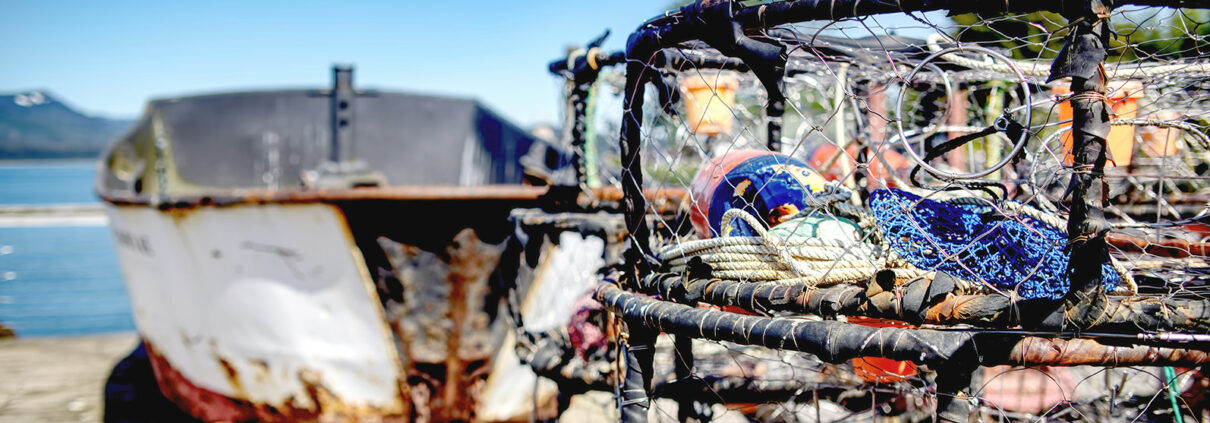As the effects of climate change impact our local fisheries, there continues to be a desire on both the state and federal level to explore additional approaches that could allow fishermen and fishing communities to more rapidly respond to climate-driven events. The current deliberative fisheries management process, while having been broadly successful in a relatively static world, might potentially be enhanced by finding ways for managers and fishing participants to respond on the fly to the unpredictable, and often sudden, shocks that climate change brings with it.
Developing such “adaptive capacity strategies” – a term sometimes used interchangeably with “flexibility” – is not a new idea. The need to explore the potential of flexibility as a climate response tool was highlighted way back in our 2016 Readying California Fisheries for Climate Change report, and was again a common theme throughout our 2019 workshop exploring management options to support fishing communities under climate change.
Responding to this need, in 2020 OST kicked off a research partnership with Dr. James Sanchirico and Dr. Matthew Reimer at the University of California, Davis to explore what is currently known about purposefully introducing adaptive capacity to promote climate resilience, and how such interventions might affect fisheries along the West Coast.
I’m pleased to share the first working paper coming out of this project. Looking across fisheries worldwide, we highlight examples where fisheries managers have purposefully deployed adaptability (or “flexibility”) to address a variety of fisheries challenges. We have written a summary blog post for Resources for the Future, which details many of the findings, so I will not repeat the full breakdown here, but I will share a few of my own takeaways from this effort so far:
1. Adaptive strategies and flexibility already exist in many fisheries. This was a somewhat surprising realization to me, given the sheer volume of calls for “flexibility” in both policy and scientific venues around climate-ready fisheries management. From quota trading to expanding gear choices to changing seasonal timing, managers and fishermen have been quite creative in finding ways to allow participants to adapt to on-the-water conditions. However, reprogramming our view of these (in some case longstanding) options as “adaptive capacity” is key; as we discuss in the paper, the current focus on flexibility alone may encapsulate diversifying a fisherman’s portfolio of permits or temporarily allowing access to different fisheries, but might be limiting consideration of the full suite of options available to increase adaptive capacity.
2. There is no “free lunch” and any introduced adaptive capacity is going to have tradeoffs. This conclusion is somewhat less surprising (“tradeoffs in everything” is a core principle of economics, after all), but this work has reinforced for me the importance of deeply exploring the downstream implications of any adaptive measure. Increasing access to other stocks during a fisheries closure, for example, may seem like a fairly straightforward option…until we start to juggle what increasing that fishing pressure does to other stocks, how increased competition affects fishing participants already in that fishery, and even what effects we will see on market prices and communities.
3. There’s no “one size fits all” solution to climate resilience in fisheries. This is another obvious takeaway, perhaps, but the specifics of the way a climate challenge is going to play out in a fishery will dictate which solutions can help best. Changing the timing of a season might work to avoid entanglements, for example, but may be less helpful for challenges related to unpredictable recruitment. And even then, the very specific dynamics of the fishery and fishing community itself – such as what other options fishermen have to turn to, or what international markets are at play for the landed catch – will dictate the viability of specific solutions for each fishery.
The last point is especially key to where our work is headed next. This first paper drew from examples across the world, but from here we will be looking at how such ideas may or may not be applicable for the climate challenges facing California and the West Coast. As pointed out in our 2016 report, introducing significant changes to fisheries management can itself be an involved process, meaning it is critical we fully explore the downstream effects of potential solutions before embarking down any specific path. So let’s put science to work in understanding whether – and if so, how – adaptive capacity measures can contribute to the climate resilience of California’s fisheries.




